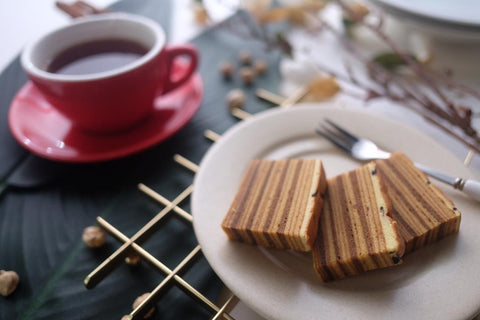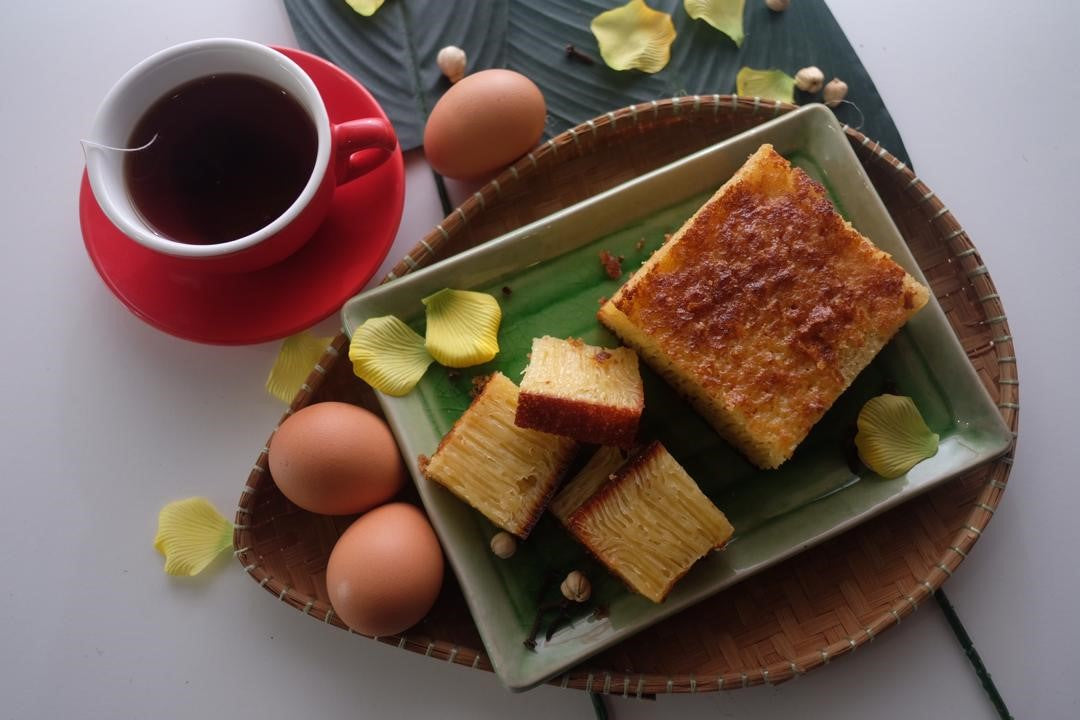Cake is a hot topic anytime of the day. And if you’re a fan of cakes, chances are that you love learning more about the interesting facts about them. Layer cakes in particular have their own history and origin. In today’s blog, we’re going to explore layer cake and all about it!
What does Layer cake mean? And what is a 2 or 3 layer cake called?

Simply put, layer cake is a stack of multiple layers or sheets of cake held together by some form of filling. The filling could be anything decadent such as jam, frosting or cream. The type of cakes that are typically used in layer cake are butter cakes or sponge cakes.
Popular flavour combinations include the German chocolate cake, red velvet cake, Black Forest cake, and carrot cake with cream cheese icing. Primarily used in special occasions such as Christian weddings, layer cakes add a special touch to memorable events.
Historically, layer cakes originated in Europe in the mid-19th century. They were popularly known as sandwich cakes or just sandwich. Early mentions of layer cakes were made in cook books and since then there was no looking back. For the European cakes, typically butter cakes and sponge cakes are preferred to give a nice, moist texture which almost melts in your mouth.
However, a lot of people are not aware of another mysterious layer cake that originates from Indonesia and East Malaysia.
Spekkoek (traditionally called kek lapis or kue lapis legit or spekuk in Indonesian) is a type of Indonesian layer cake. It was developed during colonial times in the Dutch East Indies. Unlike the soft spongy texture, the Indonesian cakes are firm-textured and are usually rich in Indonesian spices such as cardamom, cinnamon, clove, anise. Also, to take it up a notch, some layer cakes such Ambon Boenda cakes use cranberries, mocha, prunes, durian as well as white coffee.

Mille crepes is another type of layer cake mainly made up of crepes and originates from France. These are rather thinner layers, and also have a moist texture.

When are layer cakes mostly eaten?
Regular sponge or butter layer cakes are commonly eaten as snacks, or certain occasions. Primarily used in special occasions such as Christian weddings, layer cakes add a special touch to memorable events. It is said that wedding cakes are kept at the center of the ceremony to bring good luck to everyone in the wedding. Also, the wedding cakes are rarely eaten and mostly placed in the wedding as a centerpiece. Most of the time, regular layer cakes such as birthday 2-layer cakes can easily be prepared at home. With good recipes found online, this proves to be a good weekend activity for you and your family!
Spekkoek or Kue Lapis is popular in Indonesia and is served as a holiday treat. It is also served or given as gifts during many local festivities such as at birthday parties and weddings. Now Halal-certified Indonesian layer cakes such as Ambon Boenda are found in Malaysia, and used by many as souvenirs or just family gathering dinner occasions.

What are wedding cake layers called?
Weddings are an important once-in-a-lifetime situation. Cakes for wedding occasions hold an equally important part of the ceremony. Below are brief descriptions of important wedding cake terminologies.

- "Buttercream. This creamy and classic icing is made from butter and can be used for decorative touches, fillings, and the outer icing coat.
- Crumb Coat. A crumb coat is a thin layer of icing that traps in crumbs before adding fondant or a final icing layer. Some couples opt to leave the crumb coat visible for a rustic touch.
- Dragées. Decorative sugar balls (often in metallics) that are used to adorn and decorate a cake.
- Fondant. A smooth icing that’s made of sugar, corn syrup, and gelatin and gives the cake a clean look. Fondant needs to be rolled out, then placed on the cake, and cut.
- Ganache. A decadent chocolate sauce that can be used as filling or icing.
- Gold leaf. Thin layers of edible gold that can be applied to the outer layer for a decorative flair.
- Groom’s cake. A cake that is made especially with the groom’s interests in mind, that is consumed at the reception. Typically, these are themed cakes with intricate details.
- Naked cake. A cake without icing on the outside.
- Pillars. Support systems for holding layers of the cake up. Can be visible or placed inside the dessert for support.
- Piping. A technique where icing is applied through an icing bag to create designs or flourishes.
- Royal icing. A type of icing that dries quickly and hardens to help intricate design work stay put.
- Sugarpaste. A sugar-based dough that can be used to create sugar flowers or ribbons.”
Source: Link
Why do wedding cakes have 3 tiers?

“A traditional wedding cake has three tiers and each tier of a wedding cake has its own significance.
Tradition has it that the bottom tier is for eating at the ceremony, the middle tier for distributing after the event, and the top tier was saved.”
Source: Link
How do you make a layer cake?

This cake uses only very basic pantry ingredients such as butter (unsalted), cake flour, eggs, sugar, salt, sweetened condensed milk, rum, and cream of tartar. Not to forget, the cake seasonings as well.
Inorder to create the layers, separate batters need to be prepared before finally mixing together and creating the final product.
Batter 1 is creaming together butter, sweetened condensed milk, and rum followed by cake flour, spekkoek seasoning, and salt.
Batter 2 is whisking egg yolks and sugar at high speed.
Batter 3 is the egg whites.
Combine the three batter and finally, bake them separately to create layers. These layer cakes are usually higher in calories and are hence served in small portions.
As seen, layer cakes have interesting tales attached to them. They are eaten for casual snack time or during once-in-a-lifetime events such as weddings.

If you’re interested to try out layer cake, grab one of Ambon Boenda’s Halal-certified intensely flavoured layer cake which is made with traditional Indonesian recipes. Sure you will not be able to stop at one bite!
Shop Link


